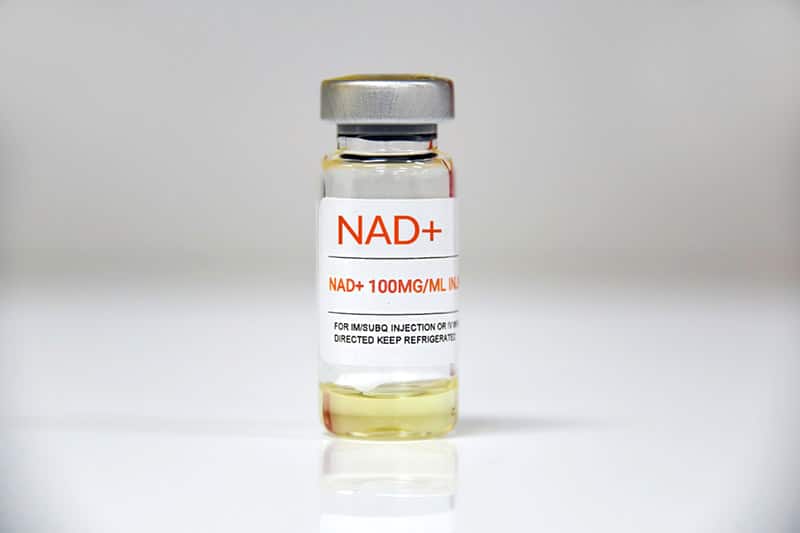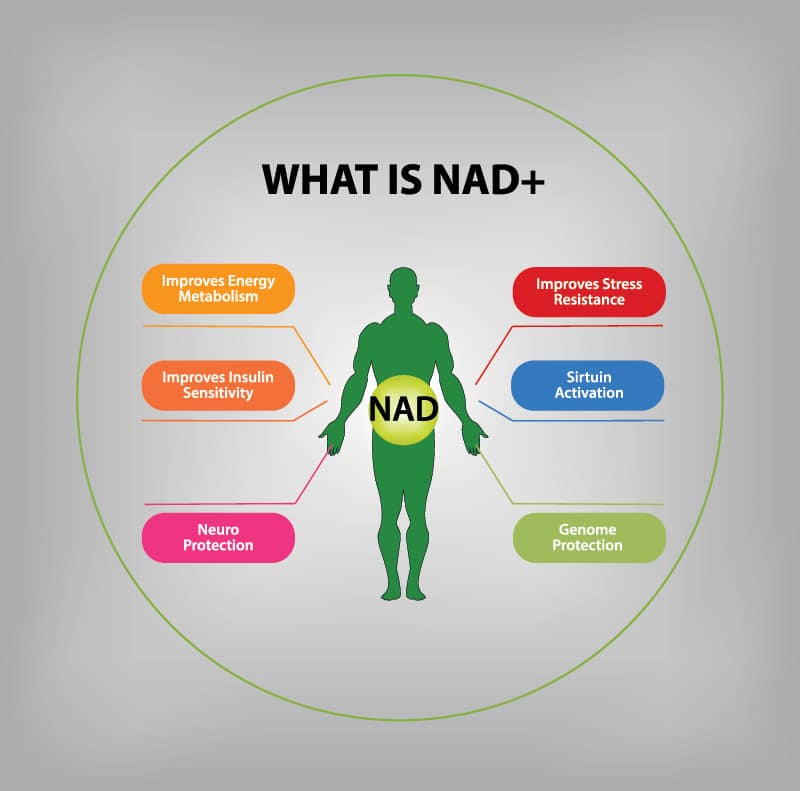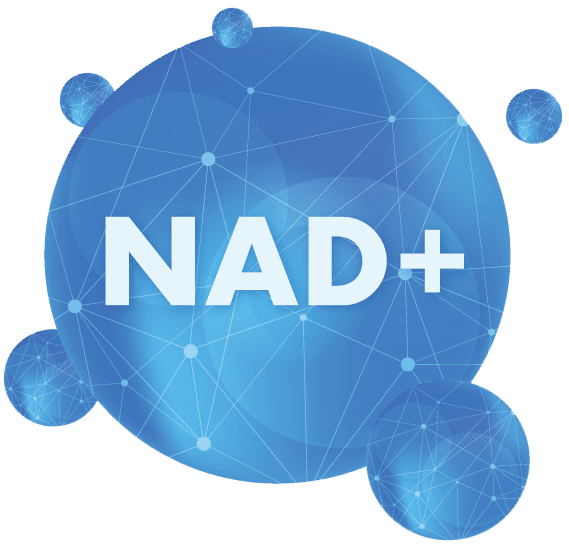What is NAD?
Nicotinamide adenine dinucleotide (NAD) is an important co-factor involved in numerous physiological processes, including metabolism, post-translational protein modification, and DNA repair. In living organisms, a careful balance between NAD production and degradation serves to regulate NAD levels.
Recently, a number of studies have demonstrated that NAD levels decrease with age, and the deterioration of NAD metabolism promotes several aging-associated diseases, including metabolic and neurodegenerative diseases and various cancers. Research demonstrates that by the age of 50, a typical person may only have half the NAD+ levels they did in their youth. By age 80 these levels drop to only 1-10% of youth levels.
Conversely, the upregulation of NAD metabolism, including dietary supplementation with NAD precursors, has been shown to prevent the decline of NAD and exhibits beneficial effects against aging and aging-associated diseases. In addition, many studies have demonstrated that genetic and/or nutritional activation of NAD metabolism can extend the lifespan of diverse organisms. Collectively, it is clear that NAD metabolism plays important roles in aging and longevity. In this review, we summarize the basic functions of the enzymes involved in NAD synthesis and degradation, as well as the outcomes of their dysregulation in various aging processes. In addition, a particular focus is given on the role of NAD metabolism in the longevity of various organisms, with a discussion of the remaining obstacles in this research field.

Mechanism of Anti-Aging
Metabolic Benefits of Boosting NAD+
Nicotinamide riboside boosts NAD+ and appears useful in preventing diseases associated with abnormal energy utilization. These include obesity, diabetes, and atherosclerosis, which are components of metabolic syndrome.
A mouse study revealed that prediabetic mice given nicotinamide riboside have better glucose tolerance, less weight gain and liver damage, and slower development of fatty livers. Similarly, in diabetic mice, nicotinamide riboside markedly reduced blood sugar, weight gain, and liver fat, while also preventing diabetic nerve damage.
Nicotinamide riboside is especially beneficial in combatting nonalcoholic fatty liver disease (NAFLD), which is considered the liver manifestation of metabolic syndrome. Interventions that reduce NAFLD generally improve all-around metabolic health. Studies in animal models of NAFLD have shown that nicotinamide riboside supplementation corrects biochemical and microscopic liver changes in mice fed a high-fat diet. In another study of obesity induced by a high-fat diet, supplementation with nicotinamide riboside increased NAD+ levels, activated sirtuins, and protected against the oxidative stresses and other damage induced by the diet (many of NAD+’s longevity mechanisms mentioned above).
Routes of Administration for NAD+ Treatment
- Intravenous
- Oral
- Topical
- Nasal

Potential Side Effects

- Flushing and warm sensation
- Nausea and GI disturbances
- Headache
- Dizziness
- Lightheadedness
